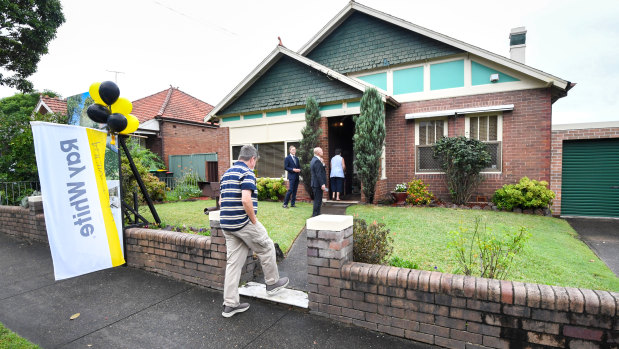‘Stress test’: Home loan curbs from cheap money era here to stay
As house prices and new mortgage lending have tumbled, some in the financial markets are turning their gaze to a banking policy from the bygone era of soaring property values and ultra-cheap money.
This policy, known as a “serviceability buffer”, requires banks to check whether someone taking out a new loan would still be able to meet repayments if interest rates rose another 3 percentage points from today’s levels.

The buffer was raised to its current level in late 2021, when it was a different world: the cash rate was 0.1 per cent, Sydney house prices were growing at more than 20 per cent a year, and there were serious concerns that a wave of cheap debt was overheating the property market. Most agreed it was a good move at the time.
But things have changed since then. The cash rate is much higher at 3.35 per cent, and house prices in Sydney are 13.8 per cent below their recent peak, and 9.3 per cent lower in Melbourne.
Given that, some observers have been asking: does it still make sense to stress test how new borrowers would cope with a further 3 percentage points in interest rate hikes, when such an outcome seems highly unlikely? What about a smaller buffer?
On Monday, we got an answer of sorts from the Australian Prudential Regulation Authority (APRA) chairman John Lonsdale: don’t expect the serviceability buffer to be changed in the short term.
Lonsdale said the 3 per cent buffer remained “prudent”, given interest rates and unemployment could climb higher. Markets expect a cash rate peak above 4 per cent.
But at the same time, Lonsdale didn’t rule out changing the buffer in the future, saying the regulator could change its stance “should risks to financial stability change”.
For now, it looks like APRA is prepared to watch and wait, as many in the market had expected. After all, loosening the buffer now would work against the RBA’s efforts to rein in lending and slow the economy, and risk sending a confusing signal to borrowers.
Even so, Lonsdale’s carefully worded statement is yet another example of the fine balancing act facing regulators, as they try to avoid an economic hard landing from the sharp rises in interest rates.
The “serviceability buffer” may sound obscure, and to be fair, it is a less important issue for the economy than what happens to interest rates. But this arm of “macroprudential” policy still matters to homebuyers and indeed the wider housing market because it directly affects how much money banks will lend.
If a bank is considering making a loan to a customer at an interest rate of 5.5 per cent, for example, the buffer requires them to assess if the borrower can handle the repayments at 8.5 per cent.
No one really disputes that sort of caution is a good idea when rates are at rock-bottom: indeed it has probably helped to keep mortgage arrears near record lows.
But some economists say it makes less sense when we are getting closer to the peak in rates. Why? Because, they argue, it risks choking off credit when the economy is already weak, risking a deeper downturn in the property market and the high-employing construction sector.

Citi’s economists, for example, earlier this month said keeping the buffer at 3 per cent risked amplifying the downturn in the housing market and in mortgage lending. They argued the buffer could be cut back so customers were assessed on their capacity to handle a 2 percentage point increase, or a rate of 7 per cent, whatever is greater. “The current buffer needs to change, or it will overtly constrain credit growth,” Citi said.
Meanwhile, CBA boss Matt Comyn was more diplomatic when asked about the serviceability buffer this month, but he also suggested it could be lowered when rates were close to peaking.
“I think it makes sense, when there’s confidence … that we’re close to the top of the interest-rate cycle, that the buffers will be reviewed and potentially adjusted,” Comyn said in an interview.
For now, however, the big unknown is just how high interest rates will go.
Until the regulators have more certainty we are at least getting close to that peak, they are unlikely to think that it would be “prudent” to loosen curbs on mortgage lending.
The Business Briefing newsletter delivers major stories, exclusive coverage and expert opinion. Sign up to get it every weekday morning.
Most Viewed in Business
Source: Thanks smh.com